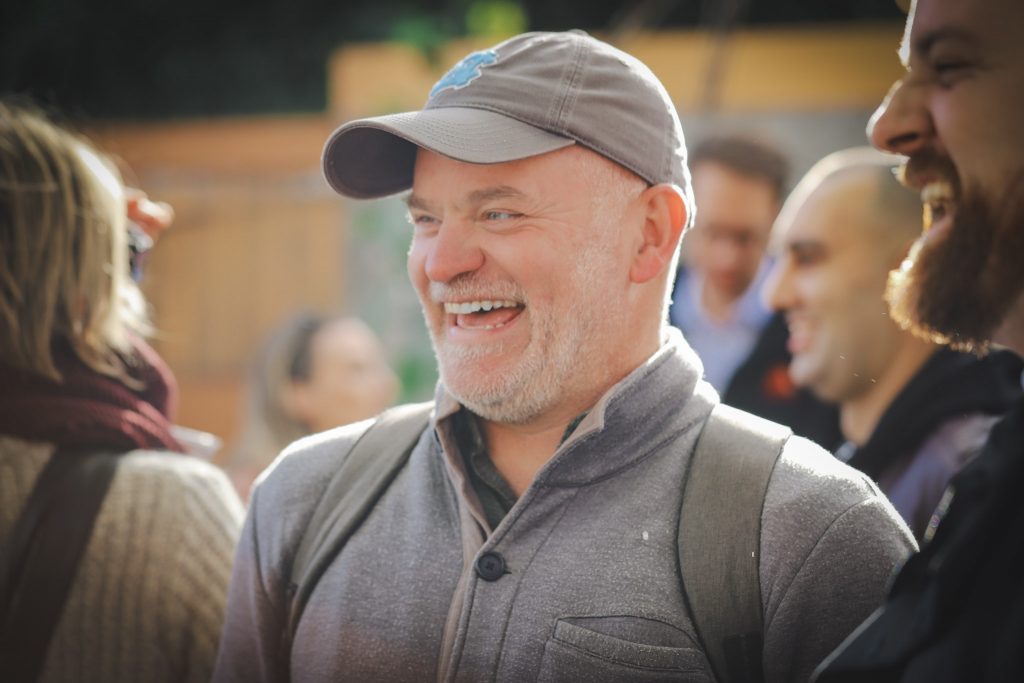Better Cities Film Festival and YIMBY in Detroit
I sadly missed the Better Cities Film Festival that took place over the past few days, having been in the great Up North for the Planning Michigan conference, which I covered in a couple of articles (Day 1 and Day 2). I did, however, attend a pregame YIMBY meetup event at Motor City Brewing in Midtown Detroit, which brought folks from around the country (and from around southeast Michigan) to talk about how to make cities friendlier to development. It was a lovely fall afternoon and a great break from the Sunday scaries. I had to miss the premiere of The Free Spirit of Caroline, a YIMBY film directed by Trần Hoàng Calvin, but here’s what the film festival’s website had to say about it:
Noted author and public speaker on issues of zoning and urban planning, M. Nolan Grey, meets his match in the small rural community of Caroline, NY. The anti-zoning battle in this small town becomes a case study for the author to apply his theory to the real life shops and farms and personalities of Caroline. This session will include the world premiere of “Arbitrary Lines” plus an extended conversation with author and star of “Arbitrary Lines” the movie.

Ok. What’s YIMBY?
Yes In My Backyard (YIMBY) is a movement that has proliferated amid the ongoing housing crunch in most parts of the United States and Canada. The name defines the informal movement in opposition to NIMBY, a term that likely originated in the 1970s amid emergent community organizing against high-intensivity, often toxic, industrial land uses. While the term may have once conjured the idea of environmental advocates of yore, like perhaps Lois Gibbs (Love Canal, 1976) or Rachel Carson (Silent Spring, 1962), it has come to be associated more with a growing movement of both liberals and conservatives in American cities and small towns who routinely fight against new real estate development.
Last week at the conference, one of our speakers gave us some new acronyms in the form of terms like “CAVE People” (Citizens Against Virtually Everything), and the Wikipedia page is a gold mine of specific alternatives to boot. This is less a question of the movement demanding additional specificity and more a question of advocacy movements– whether for sustainability, for affordable housing, or for anything– needing to figure out better ways to frame the way it often feels impossible to get anything done.

As industry has become cleaner and some of the heaviest industries have been offshored to jurisdictions with fewer environmental regulations, community advocacy fighting against construction and development has shifted from being anti-industrial to being anti-density. It’s a peculiar phenomenon, given that less density means a more exploited commons (and tragedy thereof), which results in more traffic, more congestion, and higher marginal infrastructure costs, whether we’re talking about construction or long-term operating expenses. Thinking back to the planning conference, Traverse City gave me examples of both extremes, with the downtown boasting some gorgeous, new construction projects, but with the outskirts of town hosting plenty of strip malls and newly built sprawl.

NIMBYism isn’t limited to rich neighborhoods or poor neighborhoods, nor does it necessarily correlate more along one racial or ethnic demographic line or another. Traverse City, per our docents for tours, faces community opposition for everything ranging from high-density downtown development projects to the development and expansion of recreational trails to access natural space. California, for example, features a unique mix of “socially liberal, fiscally racist” (shoutout to The Hard Times) types like those in the Bay Area lobbying against the development of much-needed new housing, and then the more universally awful Larry Ellison types in the classically reactionary vein. Both sides of this debate think that density will bring poor people, whom they hate. More on how YIMBY can bring the two sides together, though, in a perhaps unlikely manner, in a minute!
In Detroit, Southwest Detroit saw a ton of pushback (largely from a few perennial naysayers) for the development of projects like La Joya Gardens (spearheaded by SDBA, which, full disclosure, currently pays some of my bills). A couple of residents would attend every single meeting and complain that the project “doesn’t fit with the character of the neighborhood” (it was a three-story building that was being developed on a mud-covered, trash-strewn vacant lot), or that it was “too dense” (50 apartments on a whole city block), or that there wouldn’t be enough parking (“what about the parking?!”).

The YIMBY movement seeks to challenge These People™ with pragmatic, data- and research-driven approaches, that emphasize the value of adding density and improving the efficiency of municipal bureaucracy to facilitate development creating said density. M. Nolan Gray, CAYIMBY’s research director, who is prominently featured in the Caroline film, mentioned that one of the reasons why his organization seems to have been able to get so much traction was that they have a very specific focus: helping policymakers and advocates make it easier to facilitate development in cities.

It’s hard to argue against the objective of YIMBYism on paper: No one wants to face an uphill battle to deliver any product. In the case of denser development, we constantly hear about housing shortages, yet communities in which developers want to build housing often receive pushback because of the aforementioned complaints about “parking” or “neighborhood character.” YIMBY is, to that end, an unlikely opportunity to bring together both those on the left side of the political spectrum with those on the right, as I mentioned before.

If you’re farther to the right, you are less likely to take a pluralistic approach to community-building, and are probably far more likely to think that the ideal development paradigm is low-density suburban (white picket fence, vinyl siding, and ample strip malls between them). If you’re on the left, you might find yourself coming up with reasons to critique real estate development projects that are ostensibly about protecting neighborhood residents or protecting the neighborhood from corporate greed, but in the process, end up inhibiting growth, thereby making it harder for new residents to come to the neighborhood. I mentioned before that California, perversely, has both sides fighting against the same kinds of projects.

The right-wing interpretation of YIMBY can start with thinking about the value of private property rights: if you own a parcel of land, you should be able to do with it what you want. Smaller government, less regulation, and less onerous municipal bureaucracy should check the boxes on this side.
The left-wing interpretation of YIMBY can meanwhile emphasize the value of density from an environmental standpoint in the increased economies of scale and decreased marginal carbon footprint (whether per square foot or per resident) from a housing arrangement that is less car-dependent and has less building envelope. Both sides should be able to appreciate that more density that is allowed to be built more quickly results in more tax revenue that can be used to fund things like streets, schools, sidewalks, parks, and human services. Walkability, similarly, is improved with density, which has a demonstrable positive impact on public safety, local business economy, and more. Finally, and most relevant for the question of housing prices, both sides should appreciate that more housing units means less upward pressure on rents for existing renters (or existing homeowners struggling against increasing property tax assessments).
These arguments have thus far gained little traction in Detroit, where development is still extremely tough unless your last name happens to end with ‘-litch’ or ‘-oroun’. The city has made limited efforts to simplify the zoning code, which currently weighs in at about 1,000 pages of substantially obsolete bureaucracy (although there are supposedly folks working on changing it). But yesterday’s YIMBY event in Detroit, I hope, will be the first of many figuring out how we can get there!
I write about YIMBY stuff in Detroit and beyond. Follow along for more.



